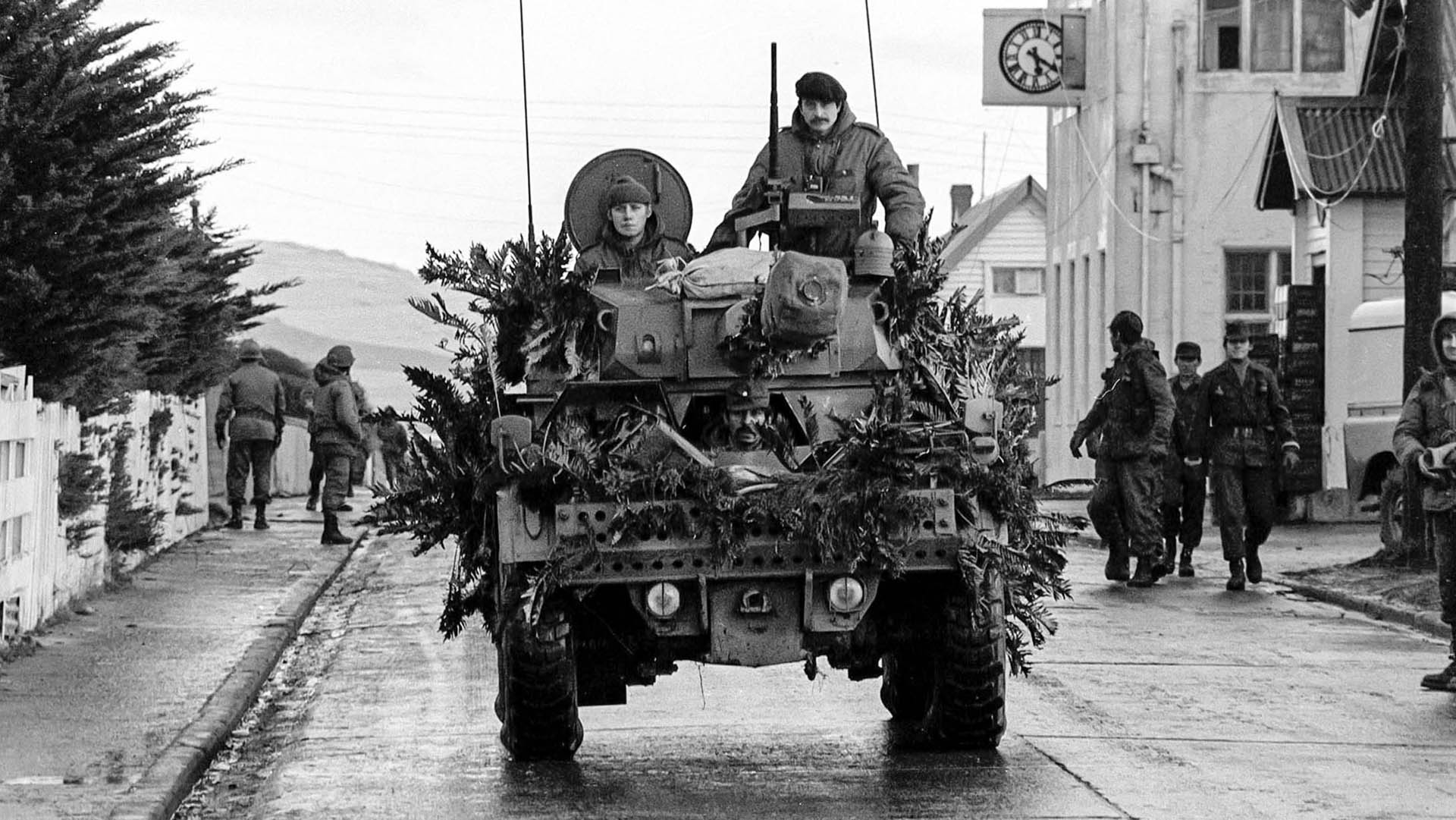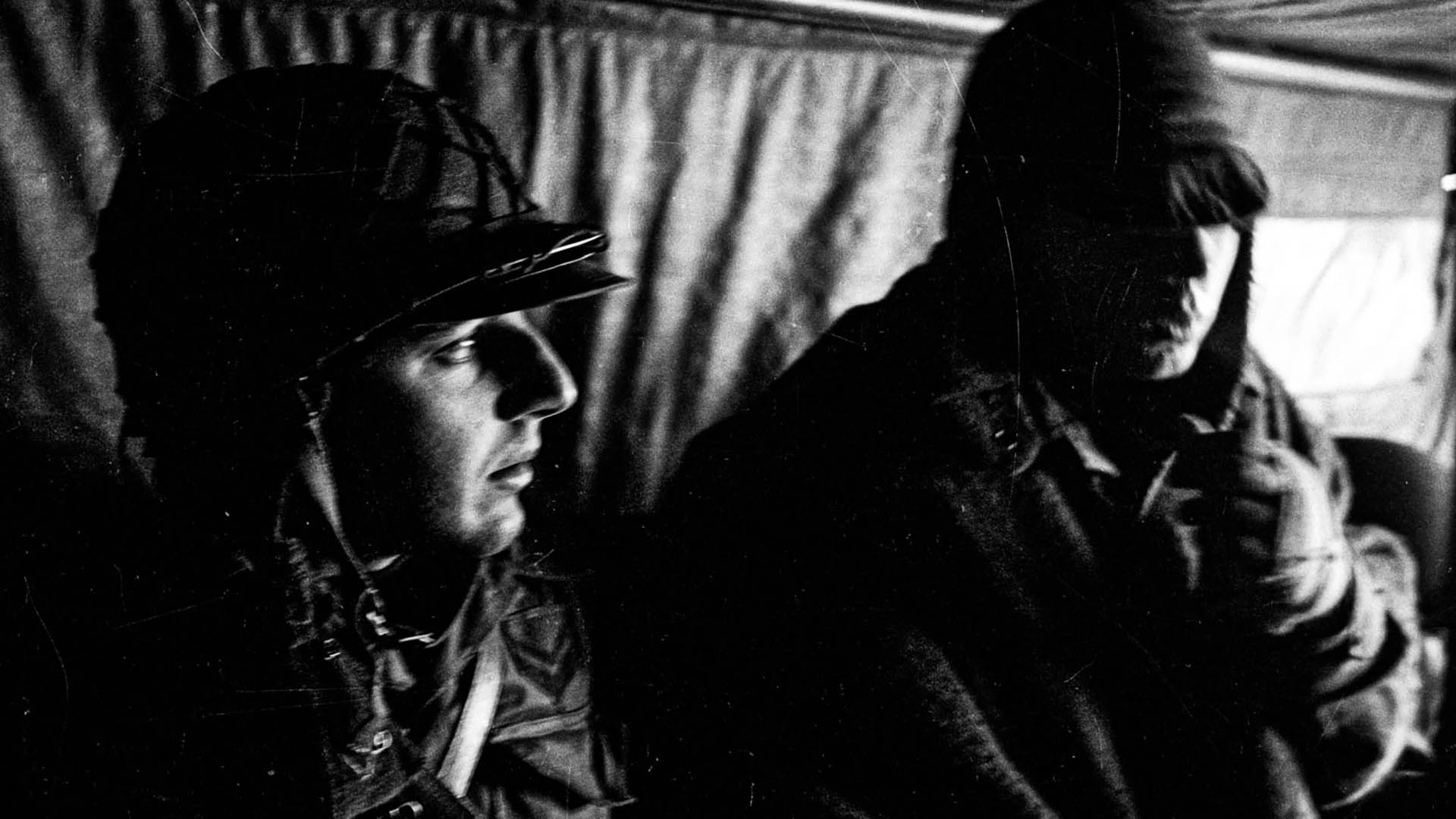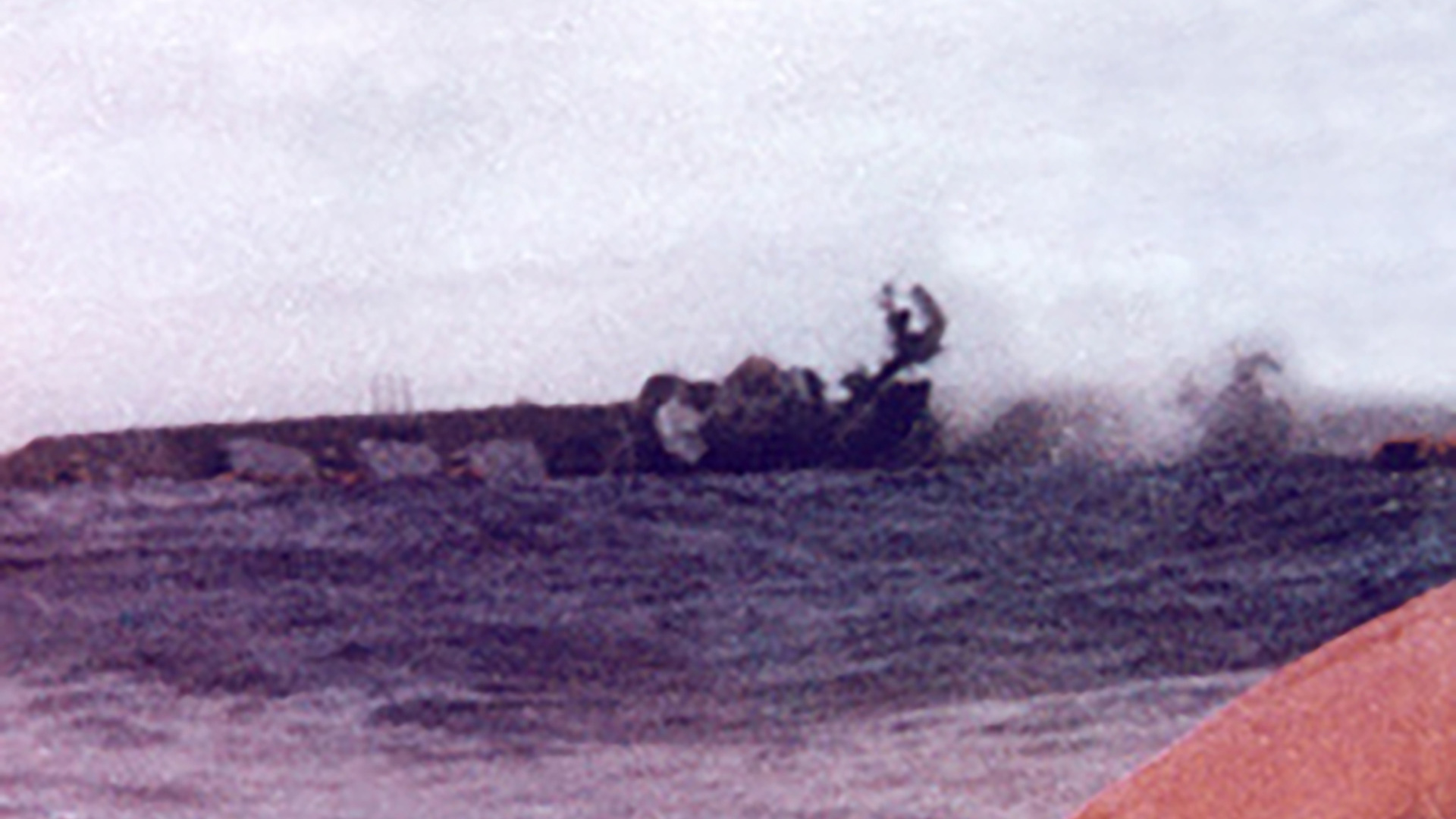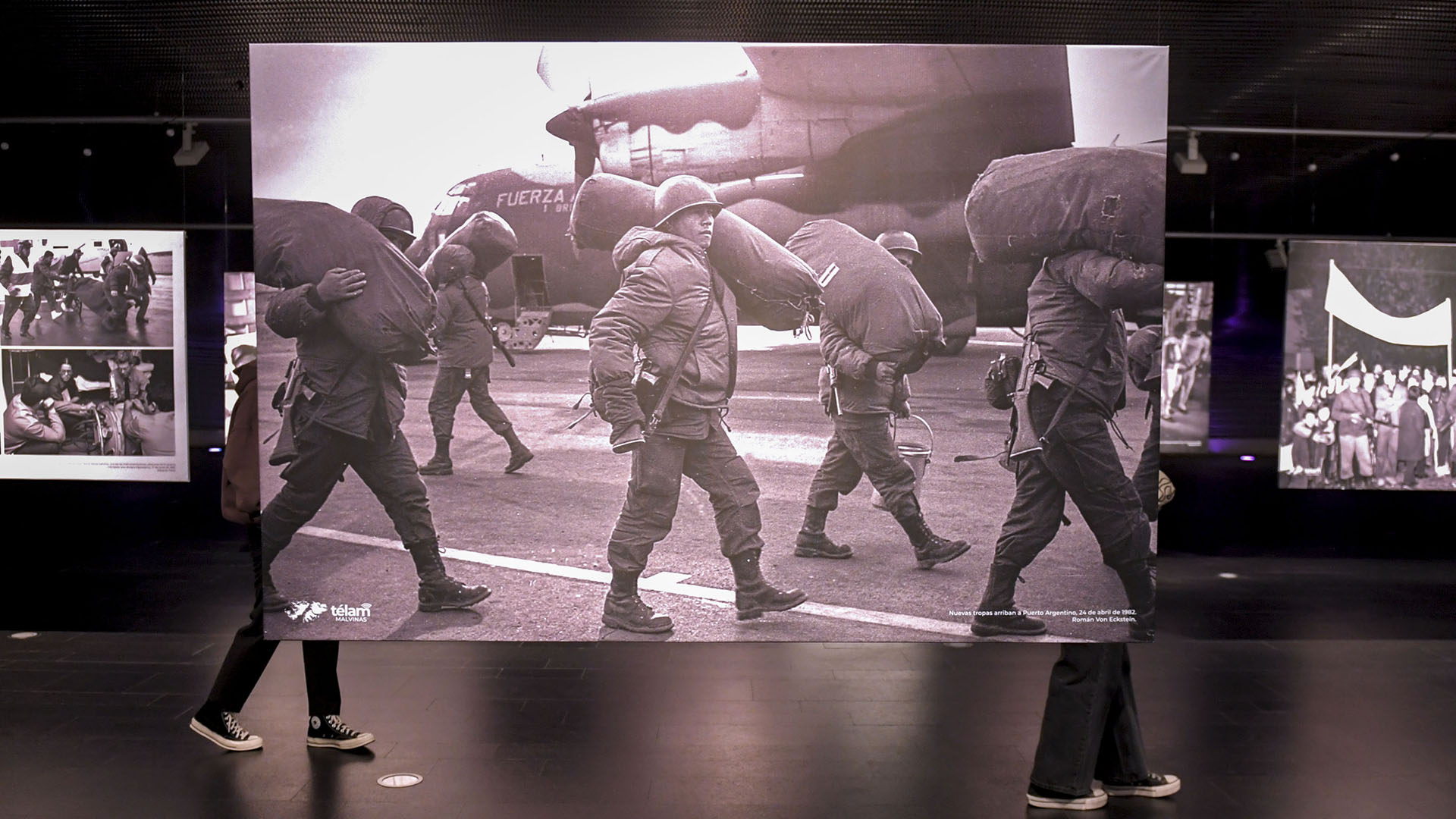From the journalistic photographs published and censored or those sold abroad for documentaries and investigations of a different nature, and 41 years after the war, the gaze of history returns to the way in which the story was told. Falklands Warfiltered by the communication model of the dictatorship and worked from the public media and academic spheres.
More than four decades separate us from one of the most visible historical wounds, the Malvinas War, a terrain in which not only sovereignty was disputed against a colonial empire but also was played in the field of communication, a scenario where the censorship and concealment of the photographic record.
documentary work The Means of War, presented on the 40th anniversary of the conflict and produced by the public media, takes up those images that re-emerge as memory and update their historical value. But in addition to the images, essential work was carried out from the academy that sheds valuable light on the facts. In this way, testimonies of direct witnesses of these “symbolic disputes” are collected, many of them invisible at the time of the conflict.
“The dispute is symbolic,” he maintains kora gamarnik, researcher specialized in Argentine photojournalism. “The first victim of war is the truth”, is the phrase that opens the documentary and illustrates the use of the media by the last dictatorship to sustain a “heroic deed” and prolong a government in crisis, but which is also exposed by the counterpart : the sale of the photographic material produced by the photojournalists of the national news agency to the foreign media, together with the censorship of the material that denied “the official narrative”, all known much later.

Only the public media were authorized to cover the entire war in the Malvinas, but a few days before Raphael Wollmannformer photographer of the ILA Agency, was the only correspondent in the Malvinas at the time of the “unexpected” landing on April 2. The photo of him showing “the humiliation of the Royal sailors”, explains Gamarnik, upset the programmed “war incursion” from the “sense to be communicated” based on the genuine territorial claim, still in diplomatic dispute. A claim that also responds to the characteristic of Argentina as a bicontinental country, its strategic resources and sovereignty.
Considered as a historical agent, the images keep in their memory the events that influenced how they “were seen and narrated”, and hence their relevance.
It may interest you: The national museums commemorate the “Day of the veteran and the fallen in the Malvinas War”
“During the Malvinas War, the photographs were the main selling point of the magazines” -explains Gamarnik-, giving “credibility” to the story, information that “occupied 90% of the space in current affairs weeklies and among the 57 and 60% in the newspapers”, he details.
However, in that uninterrupted basting of history, the relevant milestone prior to the war, as noted, was the massive popular march called by the CGT against the civic-military dictatorship on March 30, 1982, openly repressed.

The photographer Roman “Polish” von Ecksteinsent along with Eduardo Navone and Eduardo Farre to cover the conflict, for the agency telamwas the protagonist that March 30 of that iconic photo, “Give me the roll”, in which he is seen struggling with a police officer who wanted to snatch the mobilization material from him.
To this day, he claims for photos of his authorship taken on the island that were sold outside the journalistic company.
“Three days later, and under this turbulent social context, President Galtieri ordered the landing of troops on the Malvinas Islands, which had been in British possession since 1833. Only three days had elapsed since the strike. In just three days the spirits took a 180º turn ”, he emphasizes Luciano Ariasa young history professor, in an investigation on the subject, for the National University of Rosario.

Then will come the false photograph of the landing that showed an Argentine flag on the islands that illustrated the covers of magazines and newspapers of the time, the montage of an image that never existed. As exemplified in the special site that the agency telam he dedicates to the photographs from his collection: the epic of “a group of soldiers planting the Argentine flag on the islands”, corresponds to “a false montage that was carried out at the Navy School of Mechanics (ESMA)”, and then other montages made on Patagonian soil will be added, intended to illustrate the conflict.
Just on April 3, more than 40 journalists from different media outlets were taken in for a few hours, with the exception of those sent by Télam and the public channel, who continued coverage under “severe information control” by sending texts and photographs. “Some materials were censored, others directly stolen,” explain those who selected and worked on this archive.
It may interest you: They exhibit photos of the Malvinas War that were kept hidden for 40 years
“The loss of material is tremendous, much more than half of what the three photographers did. And it is due to the censorship exercised by the officials in Comodoro Rivadavia or on the same islands and in Buenos Aires who censored and made the material disappear for reasons of concealment of what was happening,” he explains. Luis Ramirez Avilahead of the photographic archive of telam.
“The sale to magazines, foreign agencies -with journalists avid for photos concentrated in the Sheraton hotels and the Plaza de Buenos Aires during the conflict- with the purpose of doing business, caused economic looting,” he says.

On the other hand, Gamarnik shows that during the conflict “there was an unequivocal absence of images where one could see the difficulties that the soldiers were going through on the islands: dirt, cold and hunger.”
Arias investigated the Malvinas war focusing “on analyzing the role of the media during the conflict” and for this he took up the newspaper The North from the city of San Nicolás de los Arroyos, province of Buenos Aires. When comparing the local medium with the foreign ones -British and a young newspaper The country as neutral ground – was able to make visible “the alteration of the news”.
Among the conclusions is the use of information to misinform and guide public opinion, hiding reality, manifested as “discretionary” use and “distortion of information” by both countries in conflict, according to convenience, without observing coincidences about what which lasted until the end of the war, in June.
The war conflict was also a business for a few with photographic smuggling. “One of the most scandalous cases was after the sinking of the ARA Belgrano,” says Arias, about the May 2 event at the hands of the British nuclear submarine HMS Conqueror.

“The lieutenant of Frigate Martin Sgut, while in the lifeboats, took four photos of the ship as it sank. The camera with the roll was handed over to his superiors and the photos appeared first in foreign media, the first being the New York Times”, says the researcher.
Seen from the present, it is worth asking how these lies are read. Arias responds: “The lies are only dismantled at the end of the conflict, when the result of the war is known, there is a first approach to what really happened. But only after several years after the event and by testimonies from ex-combatants can we say that an almost complete truth has been reached. Nationalism was a tool, a resource that they knew how to exploit to gain the support of the population, ”he maintains.
It may interest you: Leila Guerriero and her book on Malvinas: “I never lose sight of the fact that a brother, a son, was annihilated in that person in a war”
What was the role of the media at that time? “From my perspective, only one: convey good news and thus calm social spirits. This happened because the medium in question was related to the military government or because of the fear of reprisals.” It differentiates the management of the media from the journalists “especially those who were on the islands, they tried to show the reality, but they were always censored,” says Arias.
Regarding the current role, he believes that “the media continue to play with their ideology, it is impossible for them to separate from it, but to a greater or lesser extent no one denies the madness of starting a war against such a powerful country.”

How to read the conflict from a distance and understand the war from the work of photojournalists in such adverse conditions? “We read it between the lines. We see reality through one that was distorted at the time. We see reality through the silence imposed on the media. We can understand the war and the reality of our country at that time. Times of silence for fear, times of lies, times of death. We understand that it was a crime to speak against the government, or a crime to think differently. And the black market is part of the Argentine idiosyncrasy, or a fraction of it. Despite the pain and suffering caused by the war, there were people who saw a business opportunity in this and lined their pockets with money. In this, you can also read how the thought of some people was”, affirms Arias.
Many times people talk about the “Malvinas feat”, and it is worth asking if it can be understood as such. “Whether it is a feat or not depends on the perspective. If we talk about the soldiers who were at the front, fought and died for the country, it is undoubtedly a feat, and a heroic feat. I believe that this is how we should remember and honor war veterans: as heroes. From the government side, perhaps they thought of a feat, but there was never the planning, resources, and experience for it to become one,” concludes Arias.
Source: Télam SE
Keep reading

